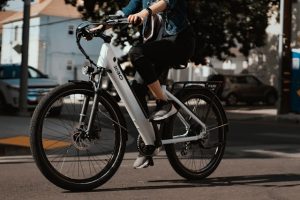
A New Era of Mobility
E-bikes have steadily moved from niche curiosity to mainstream news. Whether it’s stories about urban commuting, sustainability, or the latest product launches, electric bikes continue to capture attention around the world. The ebox 2.0, for example, has recently made waves for its upgraded power and sleek design, reflecting how fast the industry is evolving. What once seemed like a futuristic idea is now part of everyday conversation in both local and international news.
Why E-Bikes Are Making News
One reason e-bikes frequently appear in headlines is their role in addressing modern challenges. Cities struggling with congestion are encouraging residents to adopt electric bikes instead of cars. Environmental reporters highlight their zero-emission advantage, and lifestyle journalists cover the cultural shift toward greener, healthier transport.
The Ebox 2.0 and similar models also attract attention because they show how far the technology has come—longer battery life, stronger frames, and improved safety features make them viable replacements for traditional vehicles. These upgrades turn what was once a trend into a practical solution.
Economic and Social Impact
Beyond technology, e-bikes are linked to larger economic and social stories. Local governments often introduce subsidies or incentives to encourage adoption, which naturally sparks public debate. Business news outlets cover how e-bike companies are expanding production or entering new markets, creating jobs and reshaping industries.
At the community level, news stories often focus on accessibility. E-bikes make cycling more inclusive, opening opportunities for people who might struggle with long distances or steep climbs. Coverage tends to highlight personal stories of individuals who replaced their daily car commute with an e-bike and found it cheaper, healthier, and more enjoyable.
Challenges in the Spotlight
Of course, not all headlines are positive. Safety concerns, battery disposal issues, and the regulation of e-bikes in busy cities often dominate the news cycle. Incidents of accidents or conflicts between cyclists, pedestrians, and motorists sometimes raise questions about infrastructure and rules of the road.
Still, these conversations are important—they help shape the policies and innovations that will guide the future of e-bikes. The Ebox 2.0, for example, was designed with stronger safety features in response to such concerns, showing how manufacturers adapt to public feedback.
The Road Ahead
The consistent presence of e-bikes in the news suggests they’re not just a passing trend. Instead, they represent a broader shift in how society thinks about movement, sustainability, and innovation. With models like the Ebox 2.0 setting the pace, e-bikes are carving out a permanent place in both headlines and daily life.
